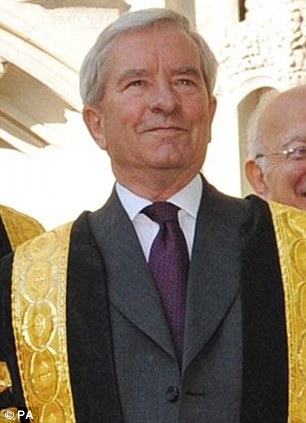Law Weblog
The Role of Judges – 12 years, one case
Thursday 27 May 2010 at 7:13 am | In News | 1 Comment The Saville report of the Bloody Sunday Inquiry will be published on June 15. Established in 1998, Lord Seville’s re-examination of the events on Bloody Sunday is the longest and at £160m the most expensive state inquiry in British history. Lord Mark Saville of Newdigate (the brilliant Law Lord who has been absent from the Lords and Supreme Court for 12 years) has been assisted by judges William Hoyt, from Canada, and John Toohey from Australia. It opened with a 42-day speech by counsel to the inquiry, the longest on record.The inquiry into the 1972 killings was launched by former Prime Minister Tony Blair in 1998. It lasted until 2004, hearing 900 witnesses and costing some 200 million pounds. Members of the families of those who died or were injured on the day, and for the soldiers most directly involved, to see the report privately … some hours before the report is published.
Called ‘Bloody Sunday’ because on Sunday 30 January 1972, thirteen people were killed when soldiers opened fire in the nationalist Bogside area of the Belfast. A 14th victim later died from wounds.
The troops said they shot at people armed with guns or nail bombs. An original 1972 investigation exonerated the paratroopers who shot marchers at a civil rights demonstration in Londonderry, the province’s second city.
Bloody Sunday was one of the most traumatic events in Northern Ireland’s 30-year “Troubles,” fuelling suspicion of the authorities among the Catholic minority and prompting dozens to join the IRA’s violent campaign against British rule.
This is the second report, the original inquiry into the incident, carried out by then Lord Chief Justice Lord Widgery, was a whitewash.
The Widgery report, which was compiled in the months after the shootings, exonerated the soldiers who fired the fatal shots and speculated that a number of the dead had been either firing at or nailbombing the Army. The allegations have always been vehemently denied by the relatives and many other eyewitnesses, who insisted the dead were unarmed.
1 Comment »
RSS feed for comments on this post. TrackBack URI
Leave a comment
Powered by WordPress with Pool theme design by Borja Fernandez.
Entries and comments feeds.
Valid XHTML and CSS. ^Top^

Warning: Undefined variable $i in /home/sixthfor/public_html/lawblog/wp-content/themes/pool/comments.php on line 28
We will see whether this report was worth it to anyone apart from the lawyers involved. Whether you are a single person or a military force, your reaction to events often depends on how you (or your leaders) perceive the events. Whether someone was or was not actually armed may therefore not be the issue. Did the soldiers reasonably perceive that they were coming under armed attack? That is the real question.
Politically, I do not know whether the inquiry process helped the overall “peace process” – it may well have done. Publishing the report is unavoidable but it could well re-open old enmities and many will reject findings which are adverse to them or their relatives.
Comment by ObiterJ — Thursday 27 May 2010 9:19 am #